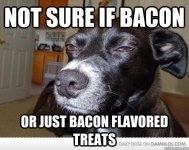For the better part of the year, AllPar has been asking Bob Sheaves (a former designer of 4x4 suspension at the Jeep/Truck Engineering's PreProgram Engineering Department from the AMC days until 1993) what he thinks the new 2018 Jeep JL Wrangler might look like and in this article, he discusses the problems of weight, strength and of course, fuel economy. In the end, the problem is always about fuel economy but, new safety regulations that Jeep needs to meet, it becomes harder and harder to keep the Wrangler true to its open top design. While it's filled with engineering talk and doesn't really answer any specific questions, I do believe this article does help to explain some of the challenges confronting the Jeep design team as well as how some of the issues in front of them may be addressed.
2018 Jeep Wrangler: Weight, strength, and fuel economy
by Robert W. Sheaves
Allpar’s members asked what we are likely to see as the next-generation Jeep Wrangler. This article is based on my engineering evaluation of various public sources, plus private discussions.
So far, this discussion has ranged over suspension choices, aluminum-vs-steel, a pickup, the body (unibody vs body-on-frame vs roll cage, etc), transmissions, and whether it can stay in Toledo. Several of these issues bring up the question of weight and fuel economy.
How much lighter and more economical will the 2018 Wrangler be?
The short answer: The 2018 Jeep Wrangler will probably weigh around 300 pounds more at curb weight than the current model, and achieve around 3-4 mpg more on the highway if they use the current V6.
The weight gain will be due to previously noted rollover strength, mediated by greater use of aluminum in the body. There are also safety tests, planned or existing, from both private industry and government, which did not exist when the current Wrangler was first engineered; achieving high ratings for these will drive weight up.
The fuel economy gain will come from aerodynamic improvements and the eight-speed automatic. Due to the expected use, a 3 mpg highway savings is more likely, as 4 mpg would require a full aero kit as used on Dart (this might be part of a less capable model).
Why not just use a VM V6 diesel with an eight speed? The engine does not fit. However, there are other diesel engines which might be possible — and we will discuss those later. The most likely V6, given Sergio Marchionne’s comments, is an upgraded 3.2 liter gasoline engine.
Why is the Wrangler so heavy: Challenges of an open-roof vehicle
Think of the body of a car as a tube with the ends closed off.
The body must resist load inputs in torsion, bending, and linear crush (I apologise for oversimplifying this), among other forces. A round cylinder provides the stiffest shape given an amount of material (e.g. steel or aluminum). Cut a hole in this tube and you weaken it to where it will collapse (or, to be more technically accurate, “deform along force vectors.” I am going to use “collapse” as an easier to understand term).
Here’s a simple demonstration: take a round paper towel roll, and tape off the ends. Hold one end in each hand, and twist the ends in opposite directions. The paper tube will resist collapsing until you exceed the stiffness of the tube, then it will crush in a spiral pattern. This is called torsional deformation and represents the twisting of the body of the car, or unibody (“semi monocoque,” normally).
As you cut more openings (doors, hood, tailgate, and the removable roof for Wrangler), you will have a piece of Swiss cheese that can barely support itself at rest, let alone under any form of induced loading. You have two options:
1. Add a load bearing member to the structure to transfer this load to another part of the body.
2. Add local reinforcement to the opening. The classic case is a Fox-body Mustang convertible; the bodies were built without the roof panels, sail panels, interior structure, and roof reinforcements (for the coupe or hatchback), back seat, and C-pillar to floor reinforcements, then shipped to McLaren to be converted into a roadsters. The issue of stiffness is clear in these cars; the weakest point was the B pillar, because of the missing structure above the beltline (rear quarter glass, aperture reinforcement, and roof header reinforcement), so that closing the door flexed the remainder of the B pillar (supporting the striker assembly) to flex inwards almost an inch, every time the door was closed. Now think about that...an inch of movement, each time the door was closed.
How many times do you open and close your door every day?
Opening reinforcements come in different variations; one is using the “sport bar” to reinforce the open section of roof. A common problem of aftermarket “roll bar kits” is that you can easily overdo the structure and cause body sheet metal fatigue failures, such as body cracking and separation at the attachments.
Like McLaren did with our example, you must use a finite element program to replace the structure needed only and spread those loads out on the body shell to prevent this condition.
Article found on Allpar here:
http://www.allpar.com/SUVs/jeep/wrangler/future/weight.html


